My time in the beautiful country of Colombia left me longing for additional travel to the Northern coast which I have not yet had the pleasure to visit (soon though!). On my initial experience through Central Colombia, I was lucky to visit numerous cities, towns and villages, including Bogotá, Chiquinquirá, Pacho, Ráquira, Simijacá, Ubaté, Villa de Leyva and Zipaquirá. This was a very special trip for me because I went with my Colombian extended “family” and had the pleasure of meeting more of their family members and friends, some of whom they had not seen in years. It was also nice for me to reunite with some Colombian friends I had met previously in the US.
From the moment you exit the international airport terminal in Bogotá, you can see how amazing the Colombian people are. There are literally crowds of locals who gather at the doors outside, waiting for their loved ones to arrive even late at night. It is not at all uncommon to have several households of family and friends greet an individual at the airport. It is almost overwhelming, emotionally and physically, as you have to be sure you are being ushered by someone in your greeting party into the correct vehicle. It really is a show of love and support from the beginning of one’s visit.
Bogotá is a diverse city, full of vibrant night life, delicious food, high-rise apartments, parks, shopping, museums, cathedrals and military presence. Police and military are very visible on the streets in full weaponry and ammunition. When passing between towns by automobile, armed officers determine from visual inspection of each car as to whether or not you may pass or need to stop for discussion. This can be unsettling for a visitor the first couple of times, but it is for your own safety so you begin to appreciate the process. A general rule is to stay quiet and still and let the locals you are with answer questions unless you are asked to speak. When you are motioned to pass, the officer will make the sign of a “V” with his fingers followed by a thumbs up sign which loosely translates to “Victory for the People.” At the time I visited Bogotá, each car could only legally drive five pre-determined days per week according to the license plate number to help control traffic and congestion. Legal motorcyclists in dense areas such as Bogotá and Medellín must wear a vest that matches the number on their respective license plates and helmets (a security measure put in place to reduce crime by sicarios, or hitmen).
Some interesting sights in the Bogotá area include Mount Monserrate (where you can ride teleférico cable cars to see the beautiful city views) and Museo de Oro (the gold museum where you can learn about the gold and precious gems of Colombia – known for their emeralds). You can also get a great manicure/pedicure in Bogotá for a very modest price – little salons are everywhere.
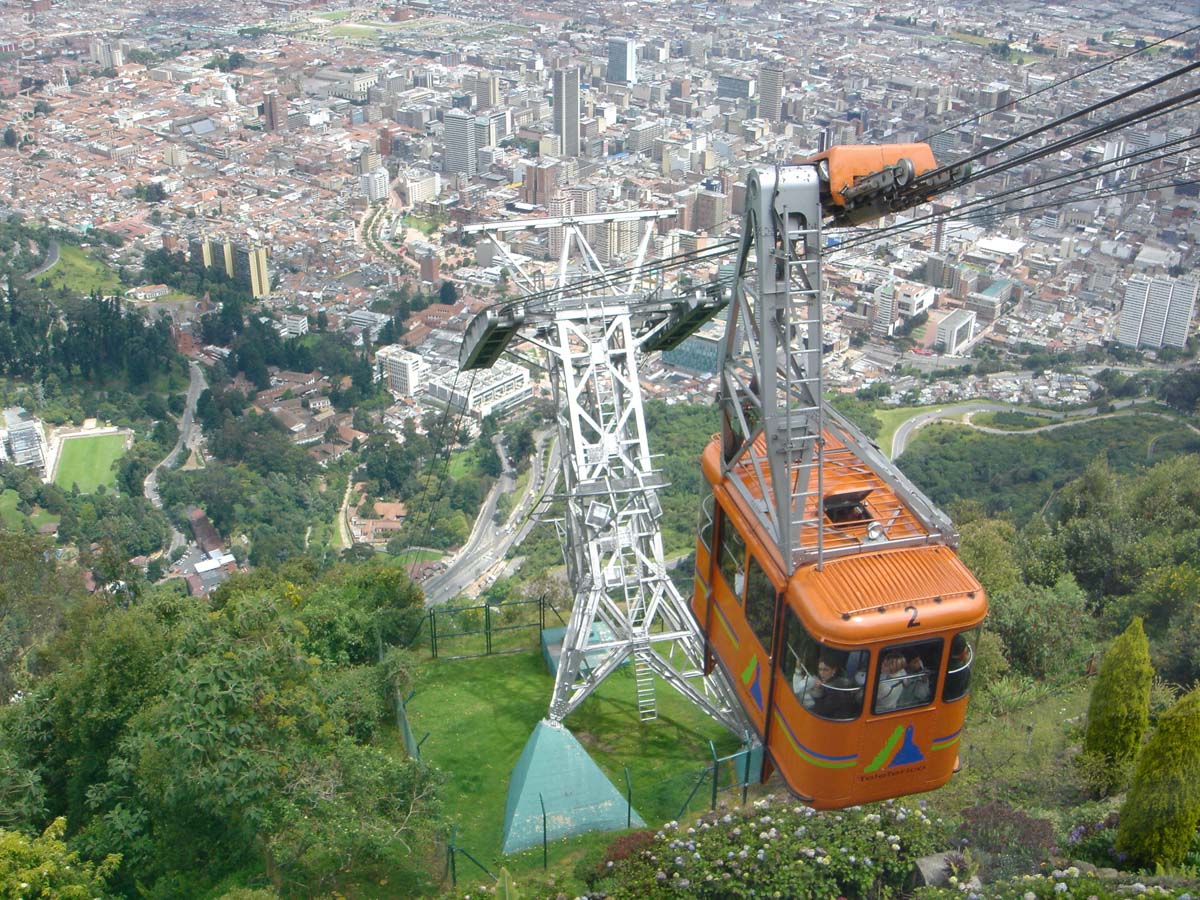
View from the Monserrate teleférico (cable car tram) in Bogotá
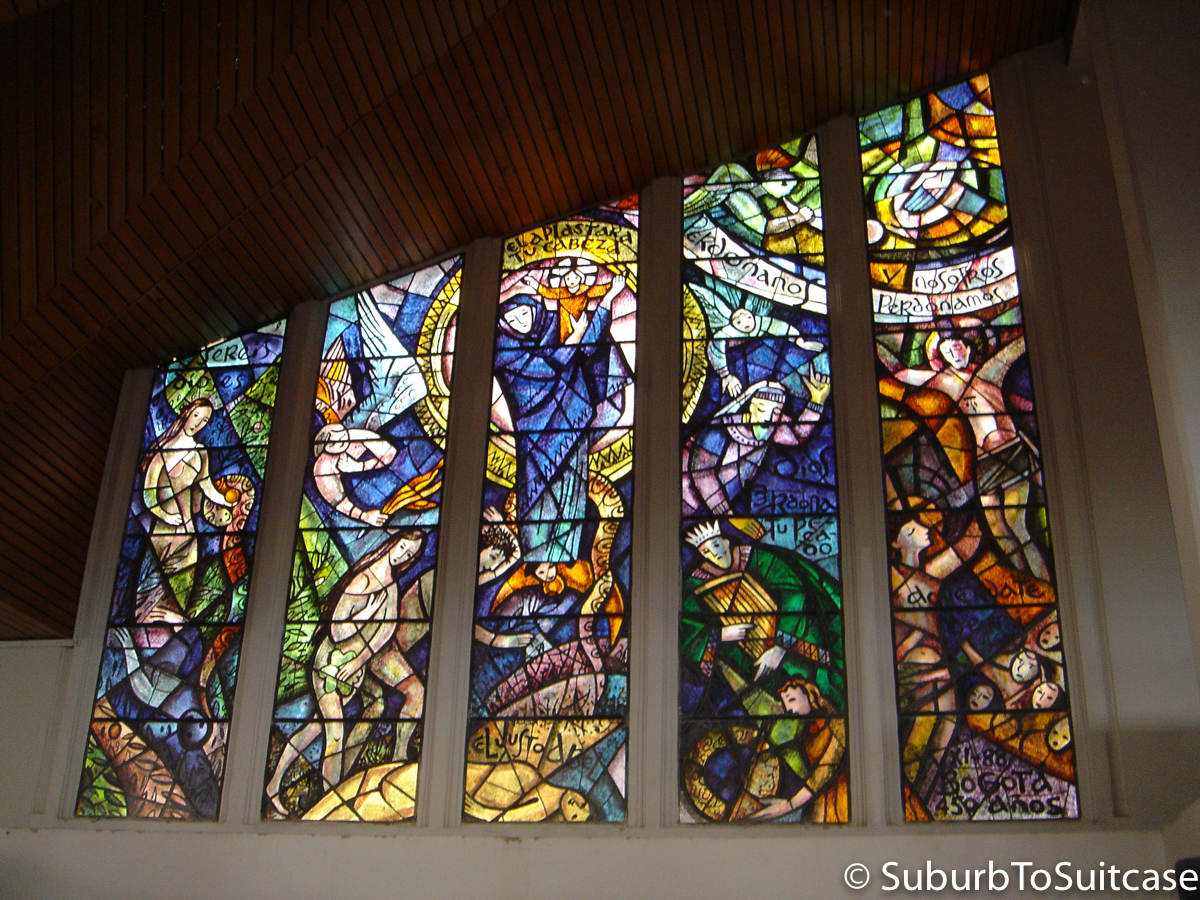
Stained glass window at the Monserrate church in Bogotá
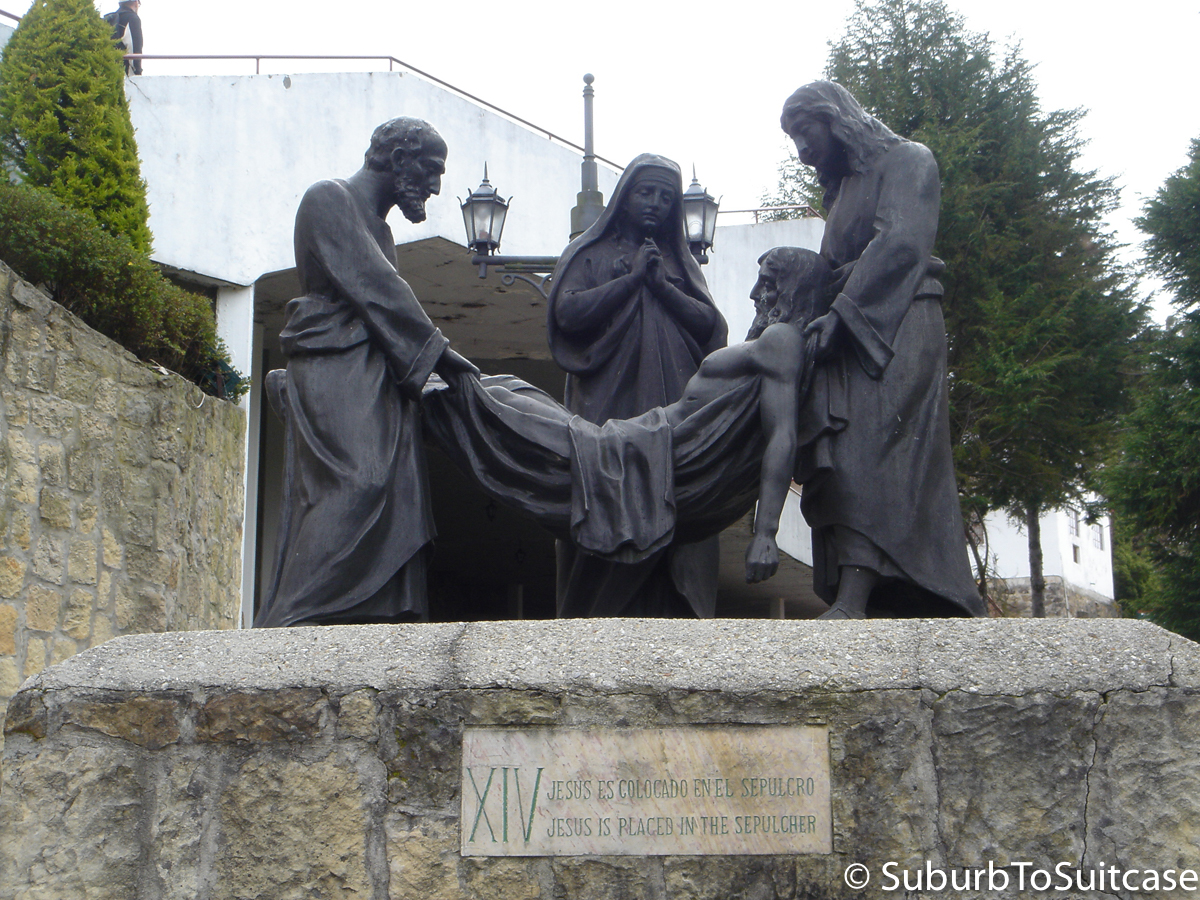
Stations of the Cross
When you leave Bogotá and move more into the countryside, you will notice similarities in towns and villages. As in other countries in South America, the center of town is often marked by a square plaza where you can usually find a cathedral and some combination of municipal building, bank, drugstore and place to buy ice cream. Colombia is primarily Catholic and the churches are ornate and beautiful (in some cases, seemingly bigger than the village itself). Meals are generally served with arepas (ground maize flatbread) that are delicious. When you are able to find “pan de queso” (an awesome little cheese bread ball), grab it! In additional to the delicious helado (ice cream) that is sold on most streets, it is also common to see brightly colored desserts. Colombia was my first experience purchasing bagged purified water. You just bite or poke the corner of the bag and drink.

Various Fruit Desserts and Flan
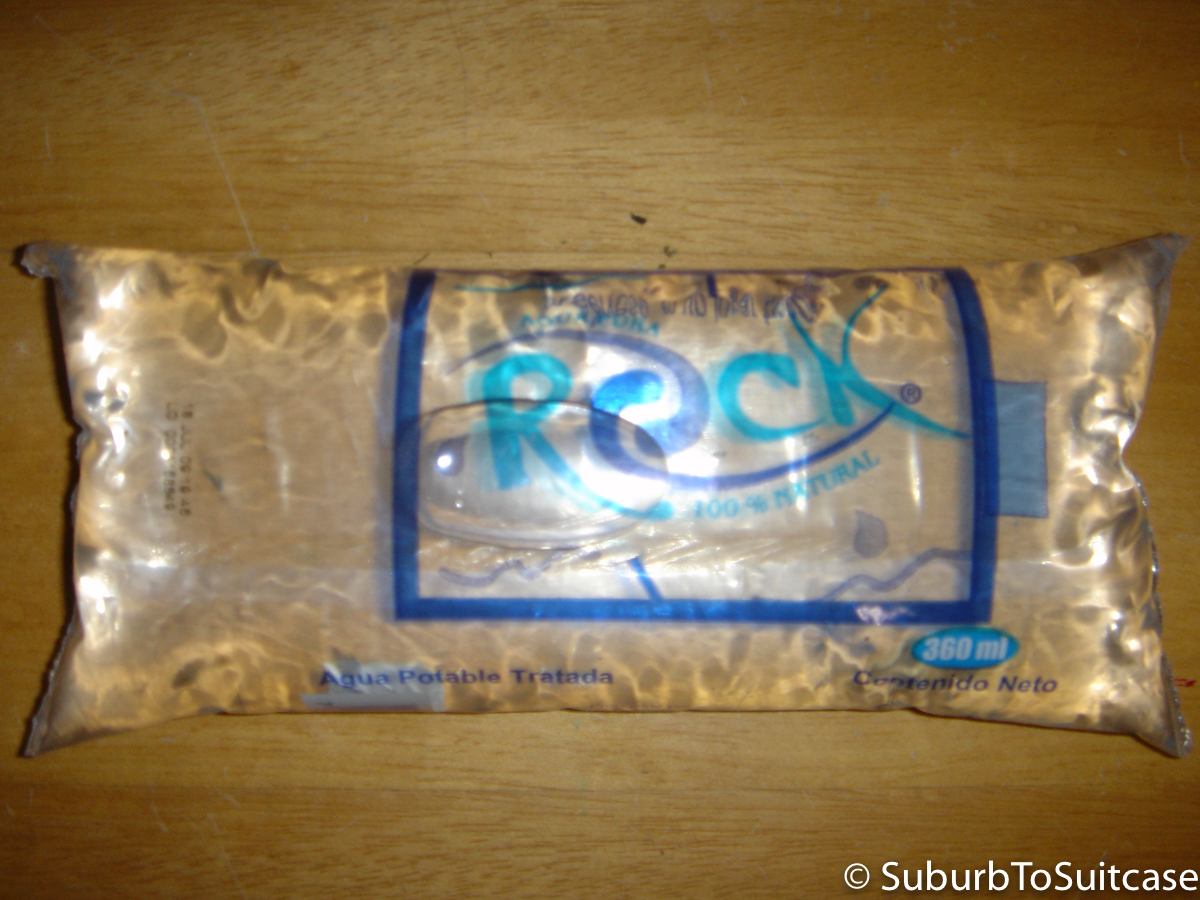
Purified Water
Each town in Colombia is notable for one reason or another and it is fun to try to determine what it is. These are some of the memories I have of each place I visited:
Chiquinquirá – This is where you will find the enormous Basílica de Chiquinquirá, once visited by Pope John Paui II, and also said to have had apparitions of the Virgin.
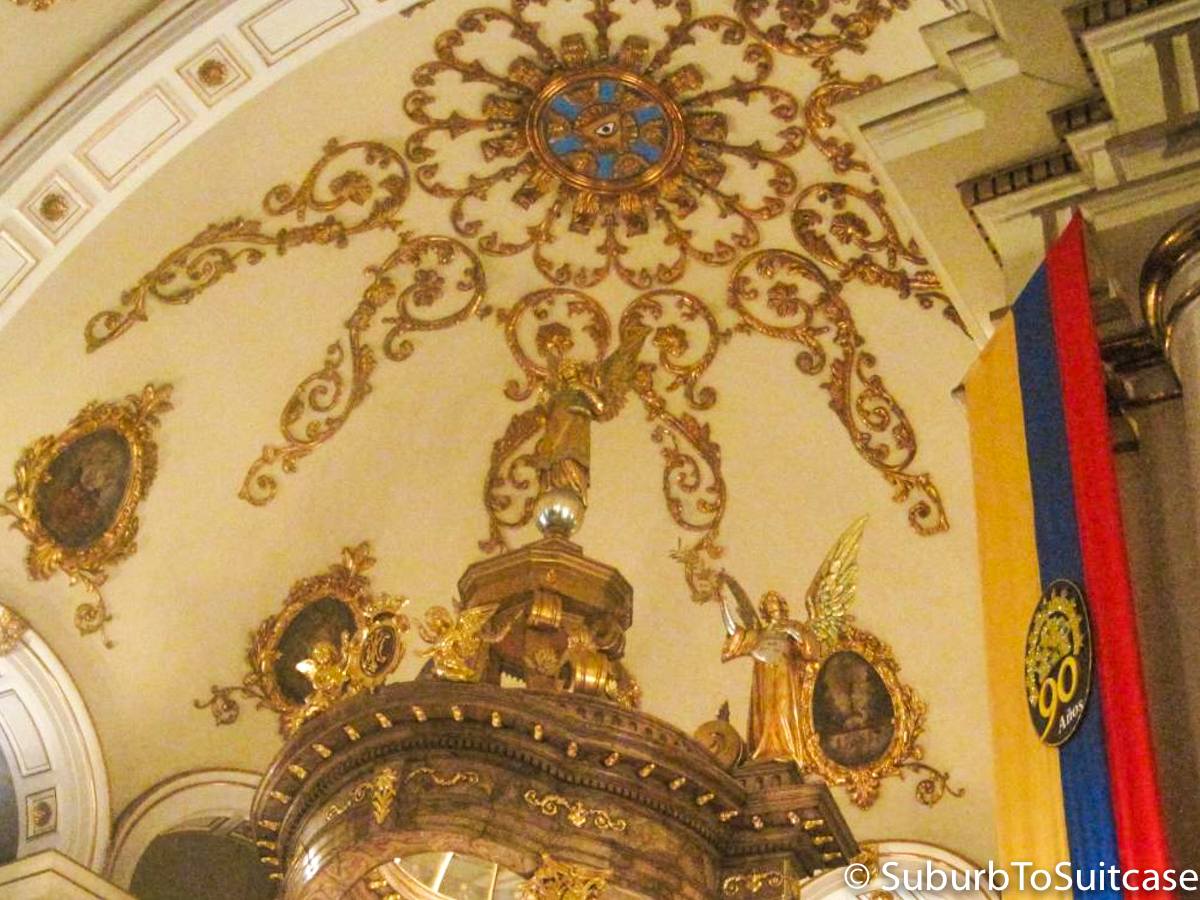
The “eye” of the Basílica de Chiquinquirá in Boyaca (look closely to find it in the center of the ceiling’s gold artistry) – an apparition of the Virgin Mary was said to be received in the basilica, and in 1986, Pope John Paul II visited to pray for peace.
Pacho – Home to beautiful mountains where bamboo and wildflowers like Bird of Paradise grow, this is also where you can see the Rio Negro. When the fog rolls in over the mountains, it creates a stunning view.
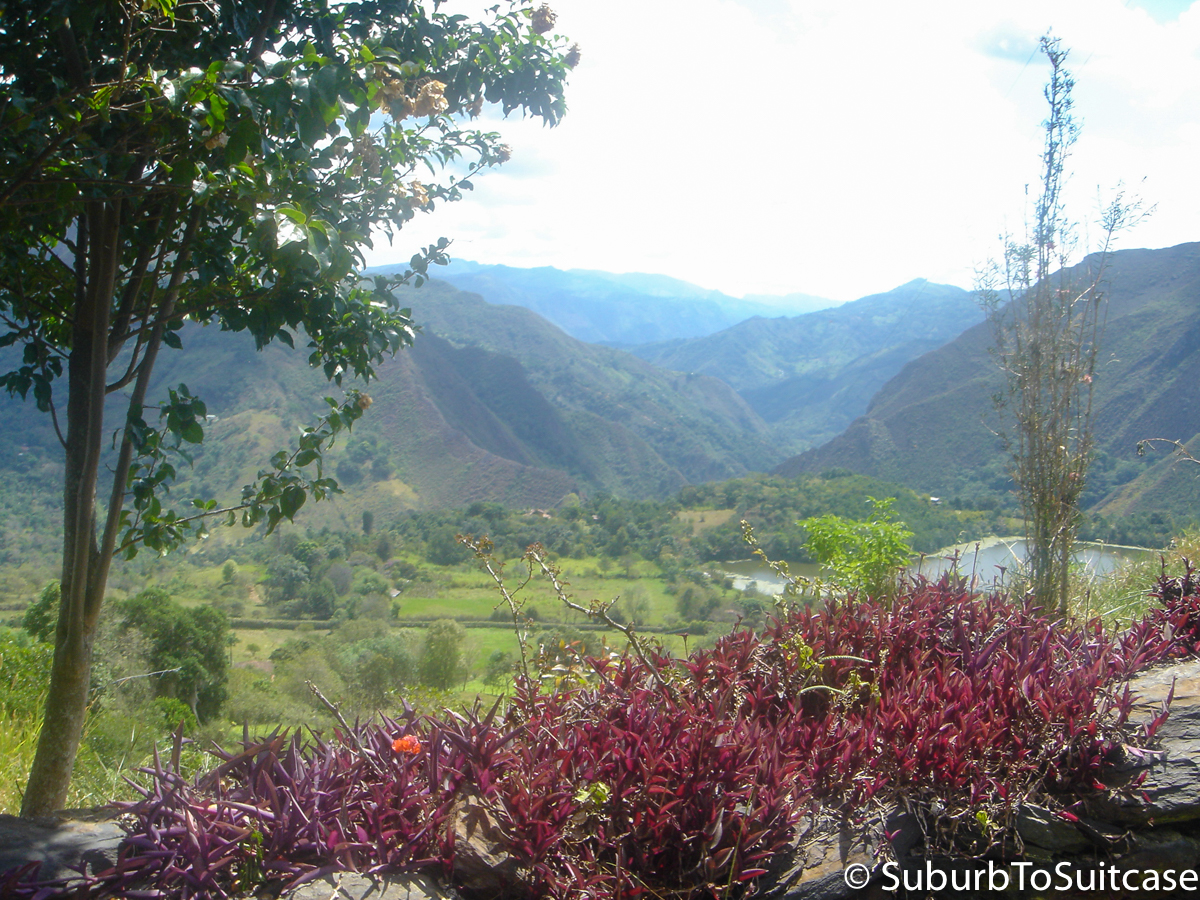
View of the foothills from Pacho
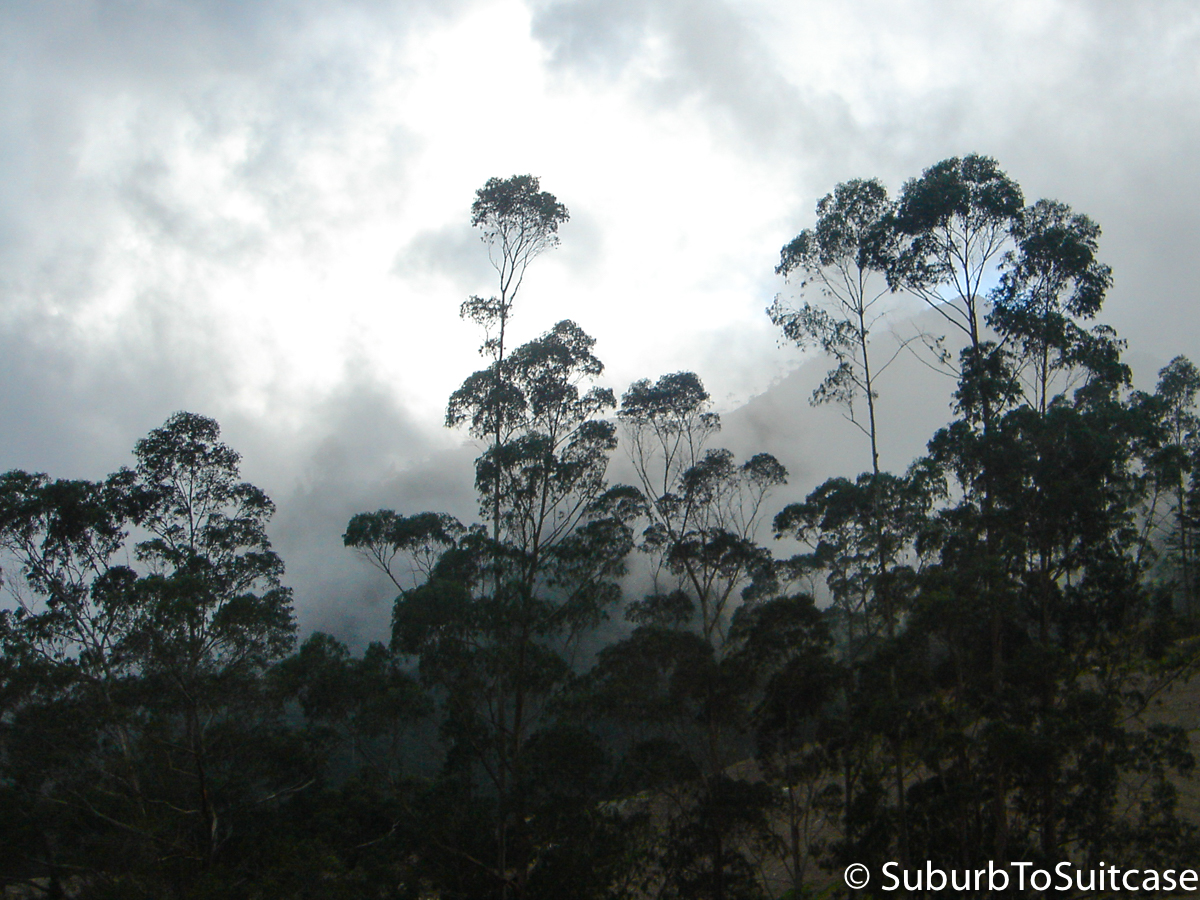
Fog rolling in over the mountains in Pacho
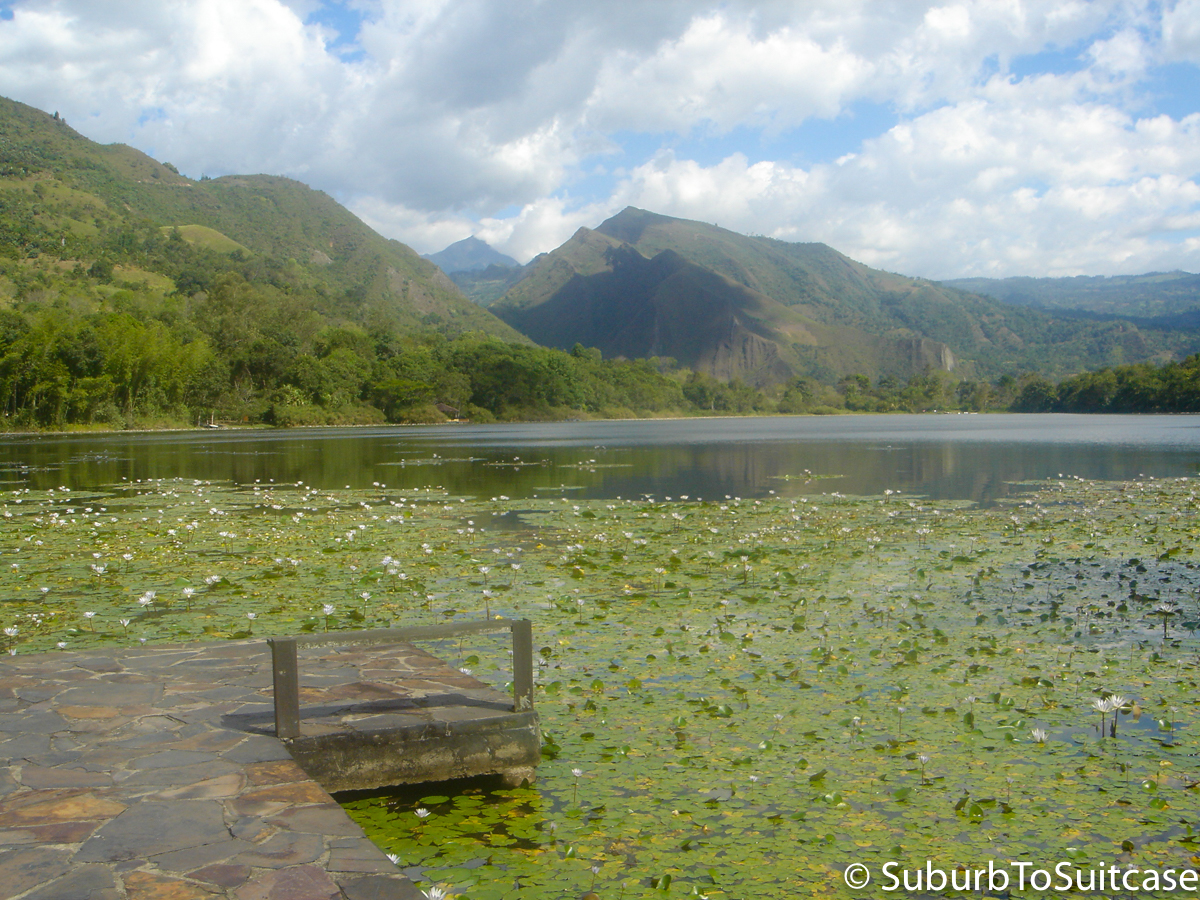
Lotus flowers in the foothills of Pacho

Lotus flower in the lake in Pacho

Wildflowers in Pacho

Wild orchids in Pacho
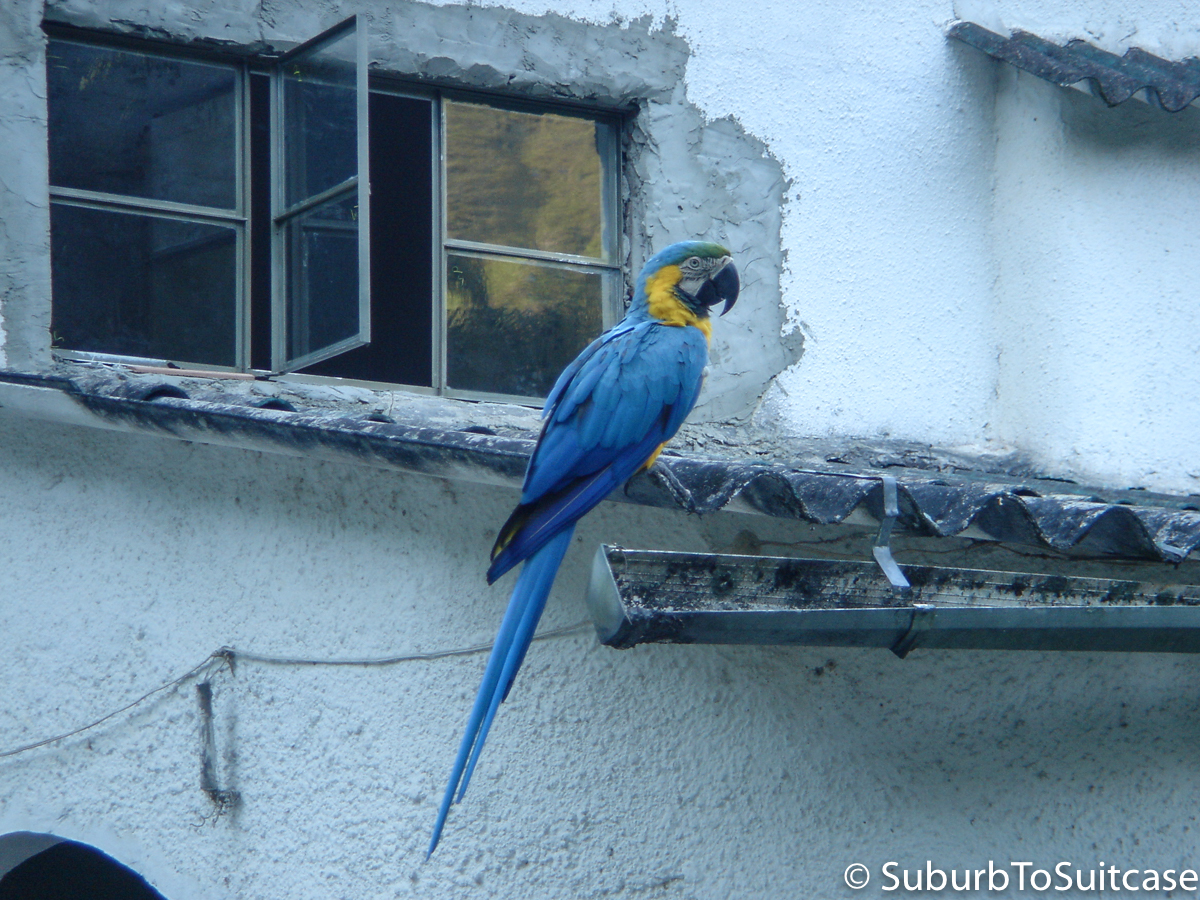
Wild parrot visiting for breakfast in Pacho
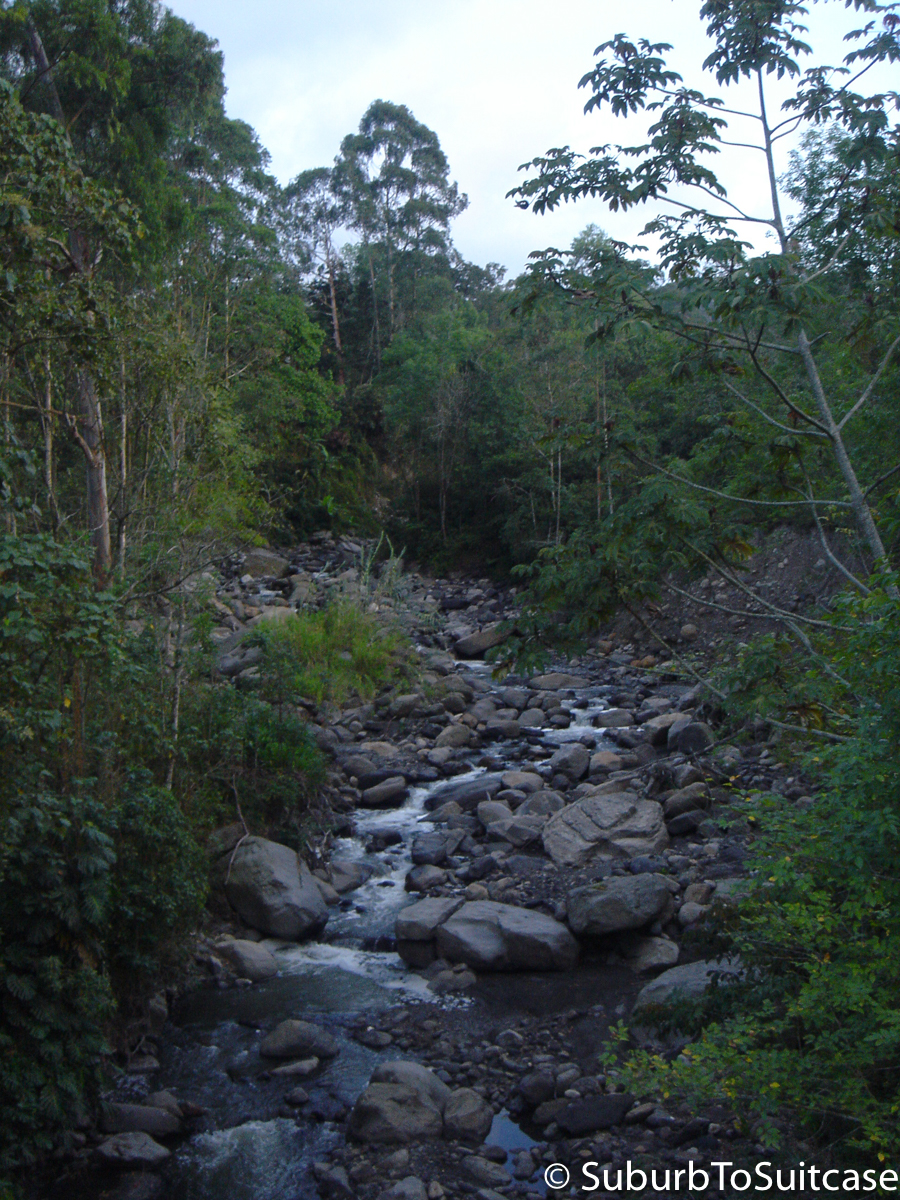
Rio Negro (tributary to the Amazon River)
Ráquira – This is a little area of vibrant color where you can purchase handmade crafts like the small clay churches. You may spot burros here.
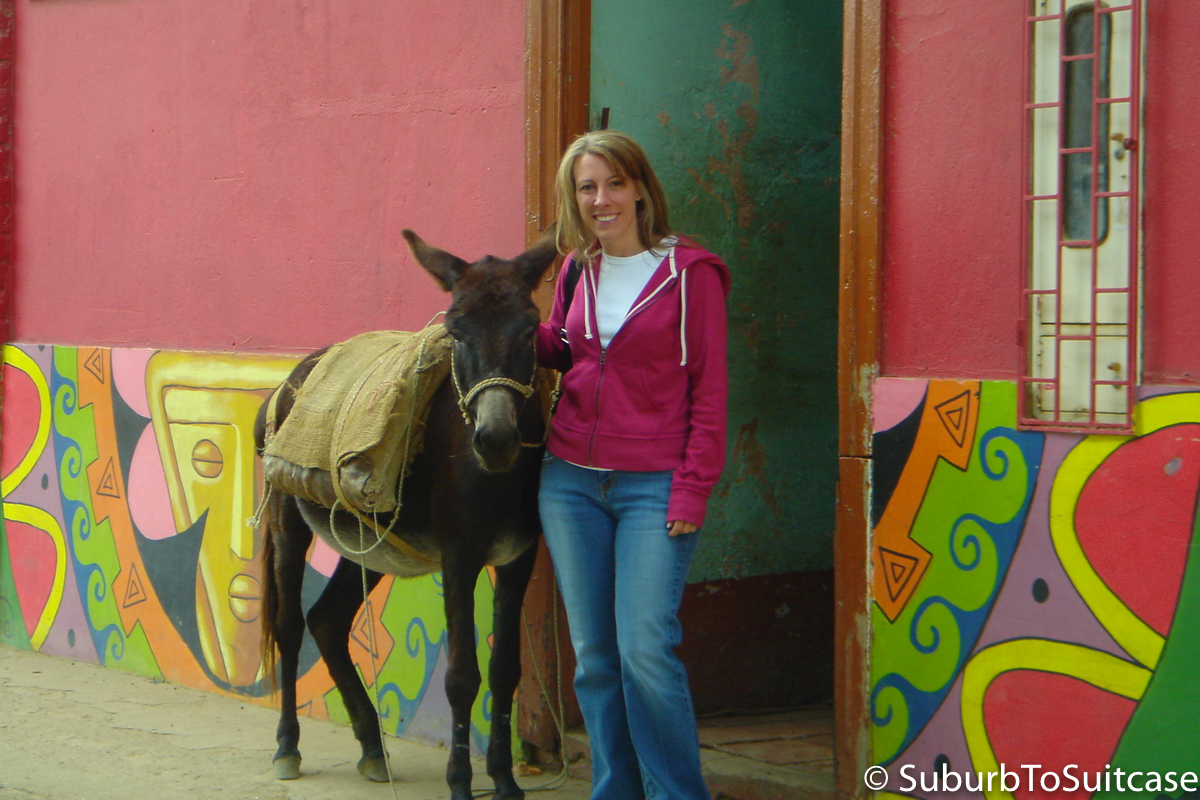
Me with a burro in Ráquira
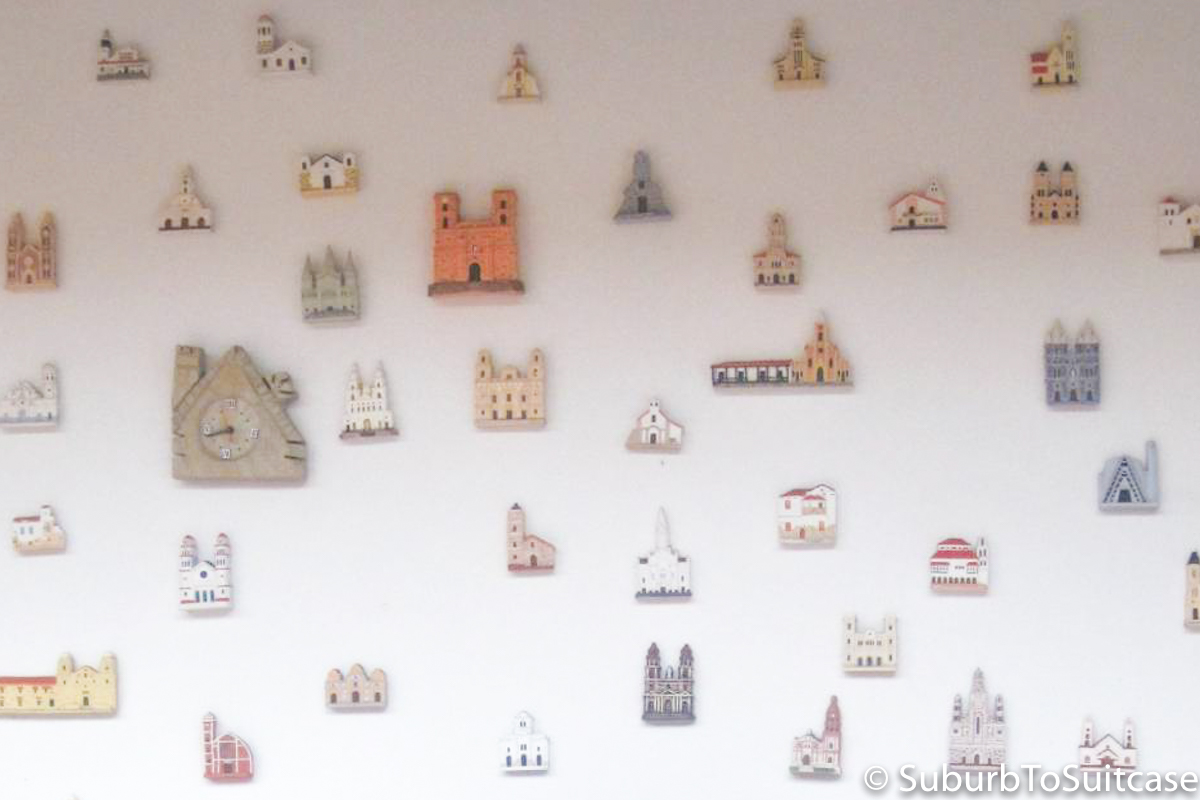
Small painted clay iglesias are common – each iglesia represents an actual church
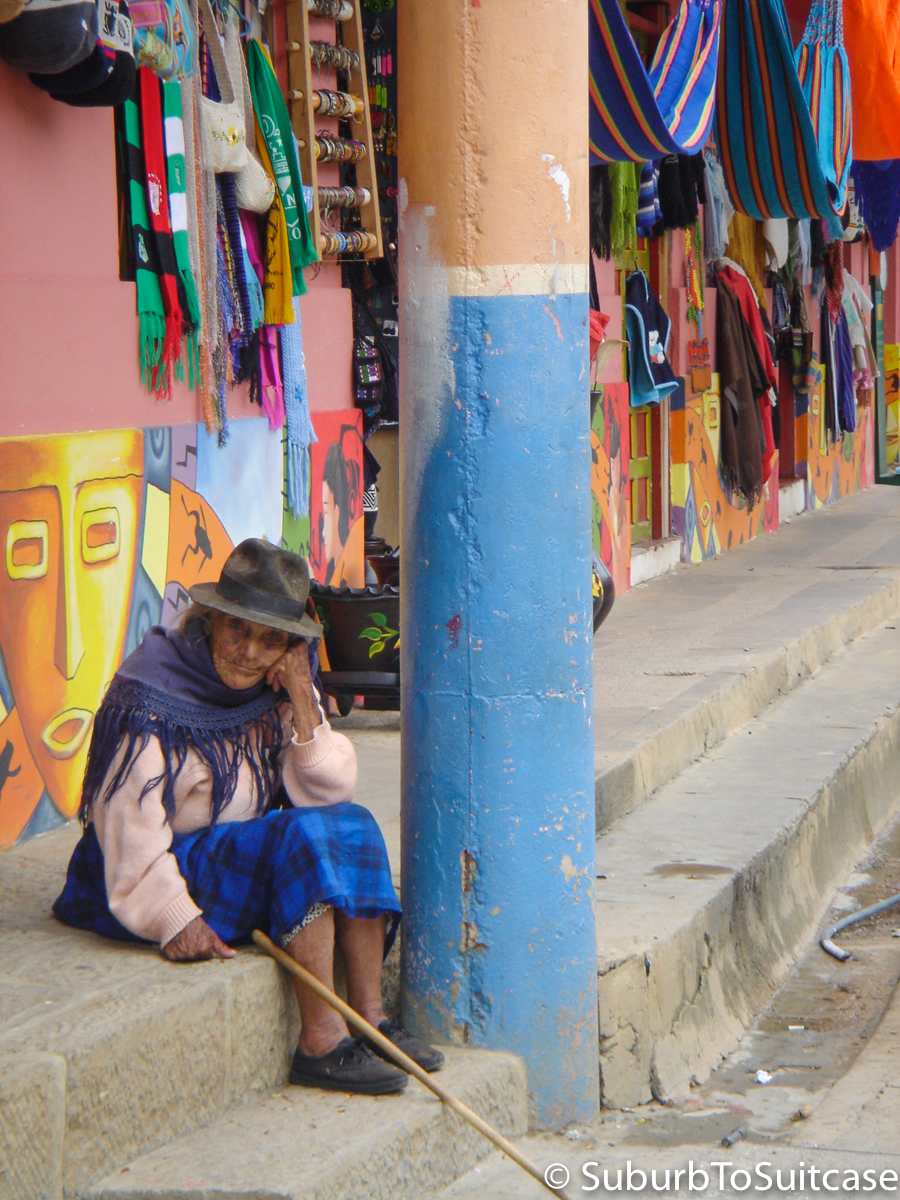
Brightly painted walls line the street market in Ráquira
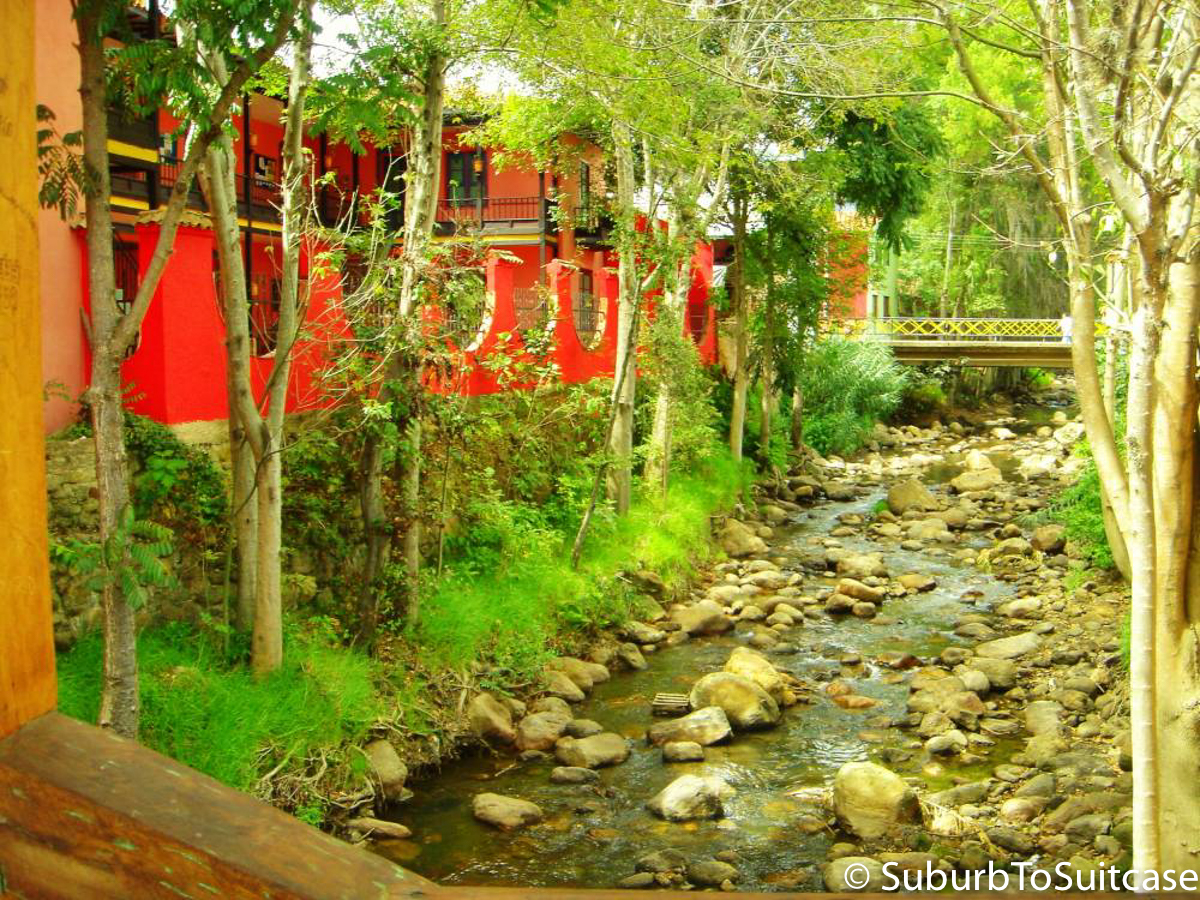
View from the Bridge of Souls in Ráquira
Simijacá – This area is near the monasteries where you can do tours and even rent a room to stay onsite. After the military occupation, many precious artifacts were found in sealed rooms of the monasteries which preserved valuable religious books, statues and artwork.
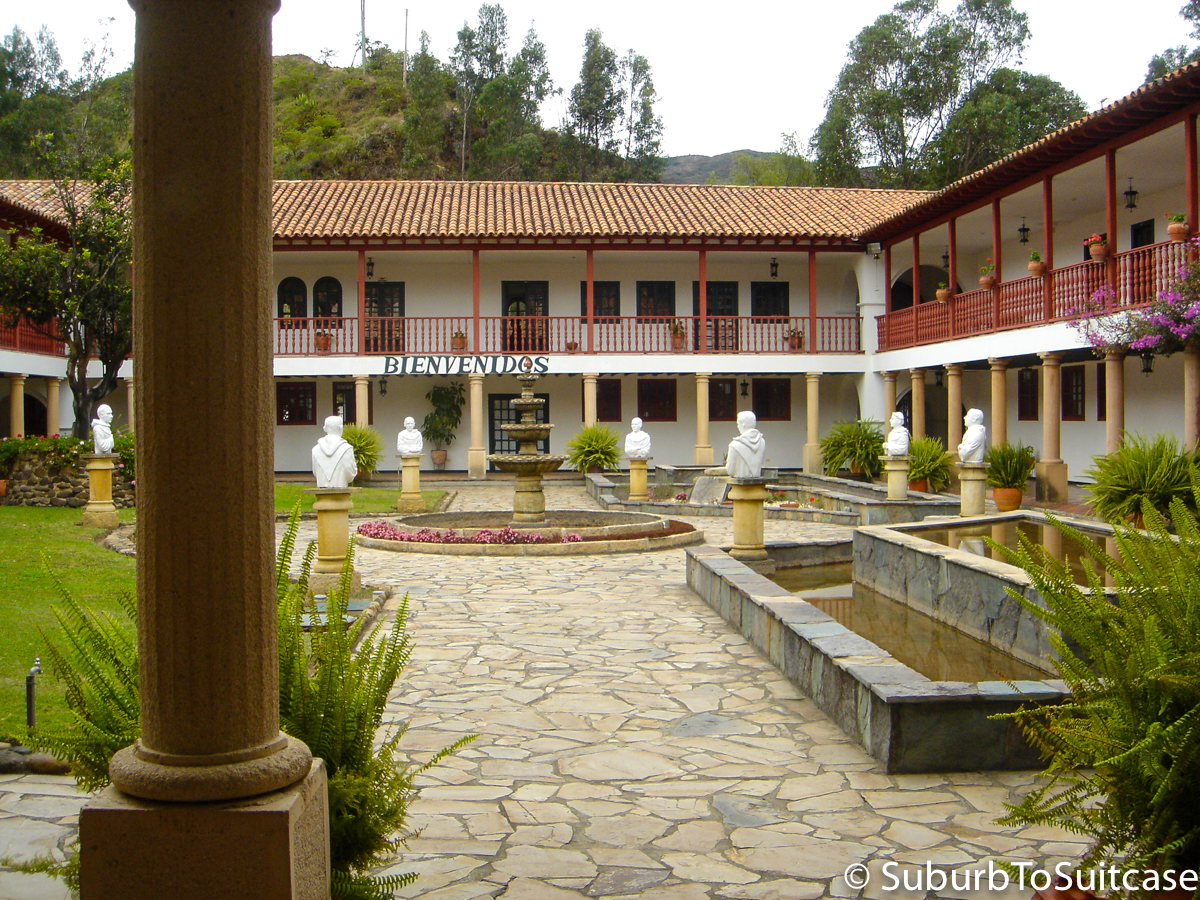
Monasterio Desierto De La Candelaria (active monastery)
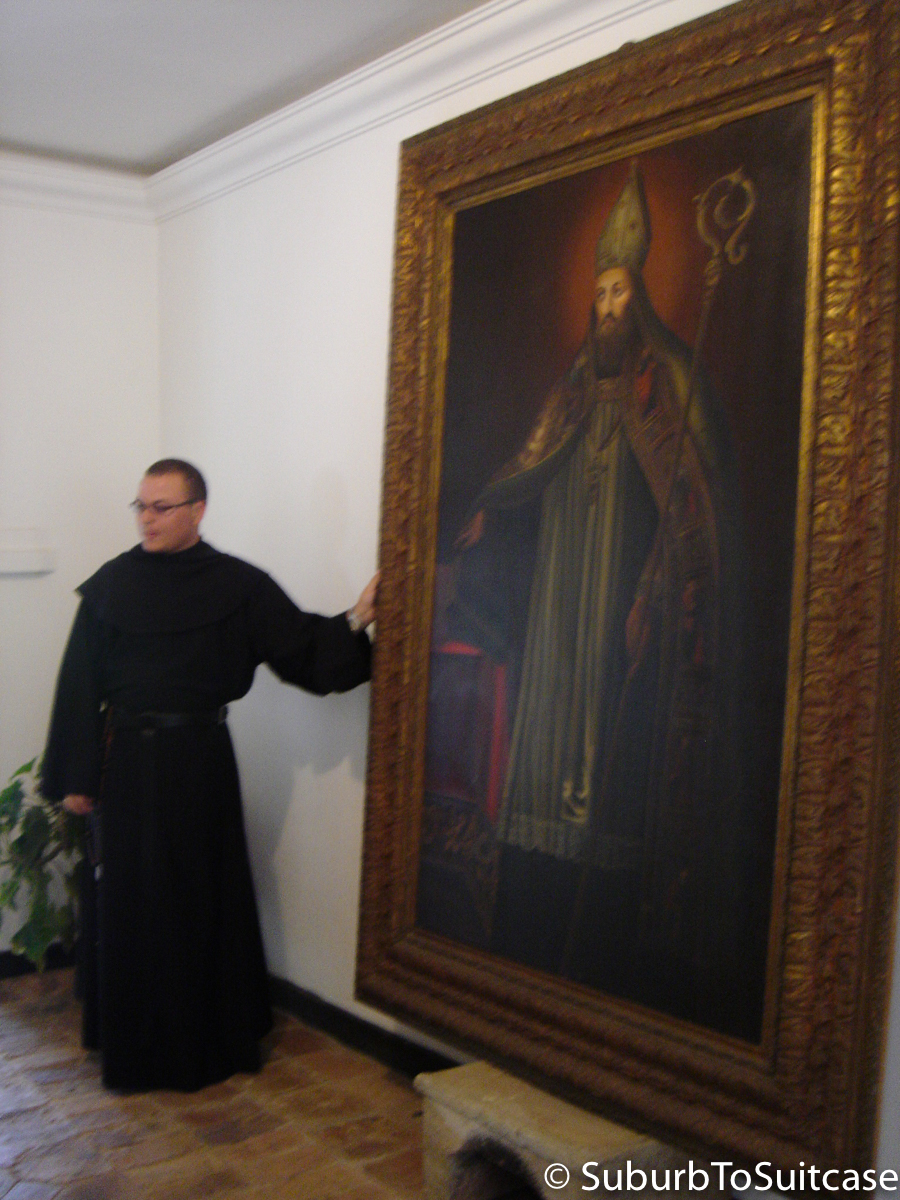
Painting of St. Augustine from 1700s
Ubaté – Visitors should stop here to find a “fabrico de queso” vendor at one of the farms to buy some fresh milk and try the homemade cheese.
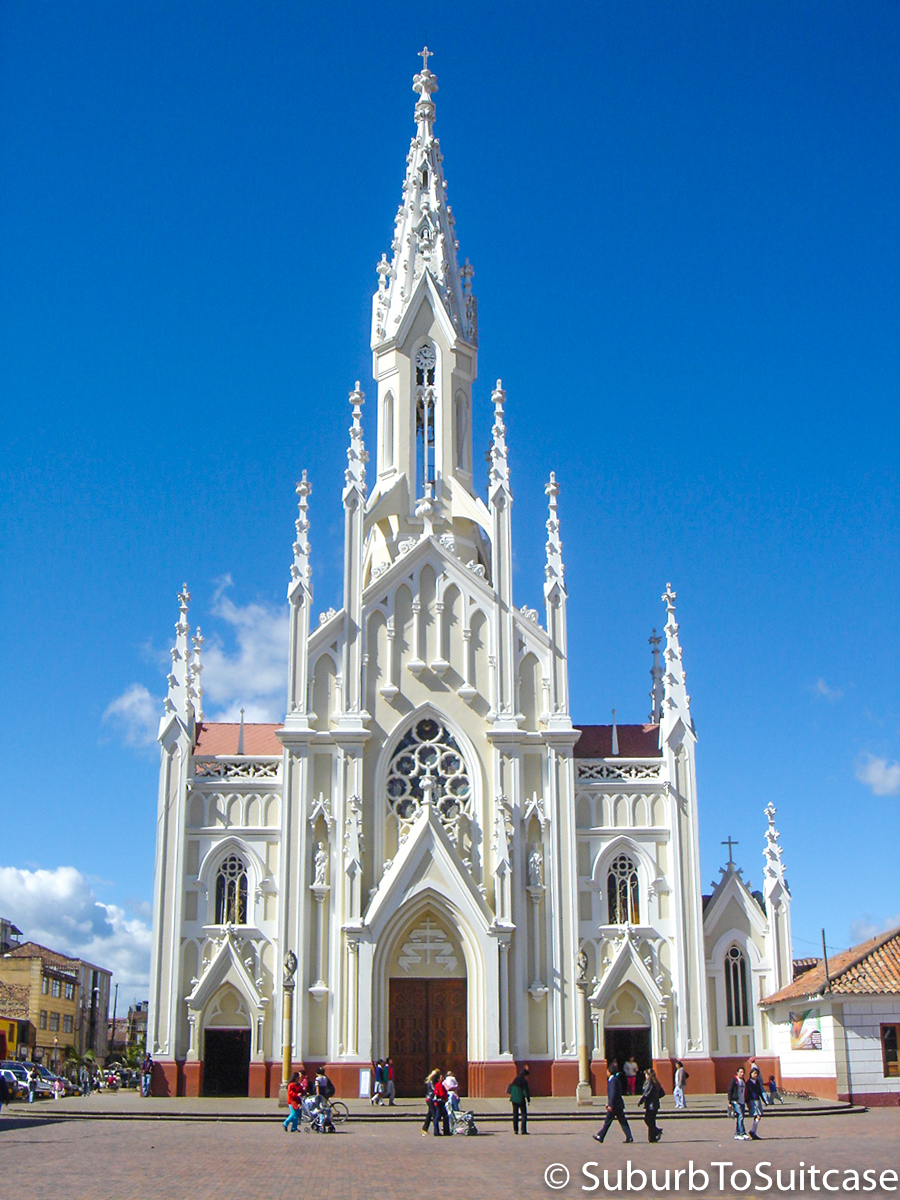
Ubate Church and Central Square
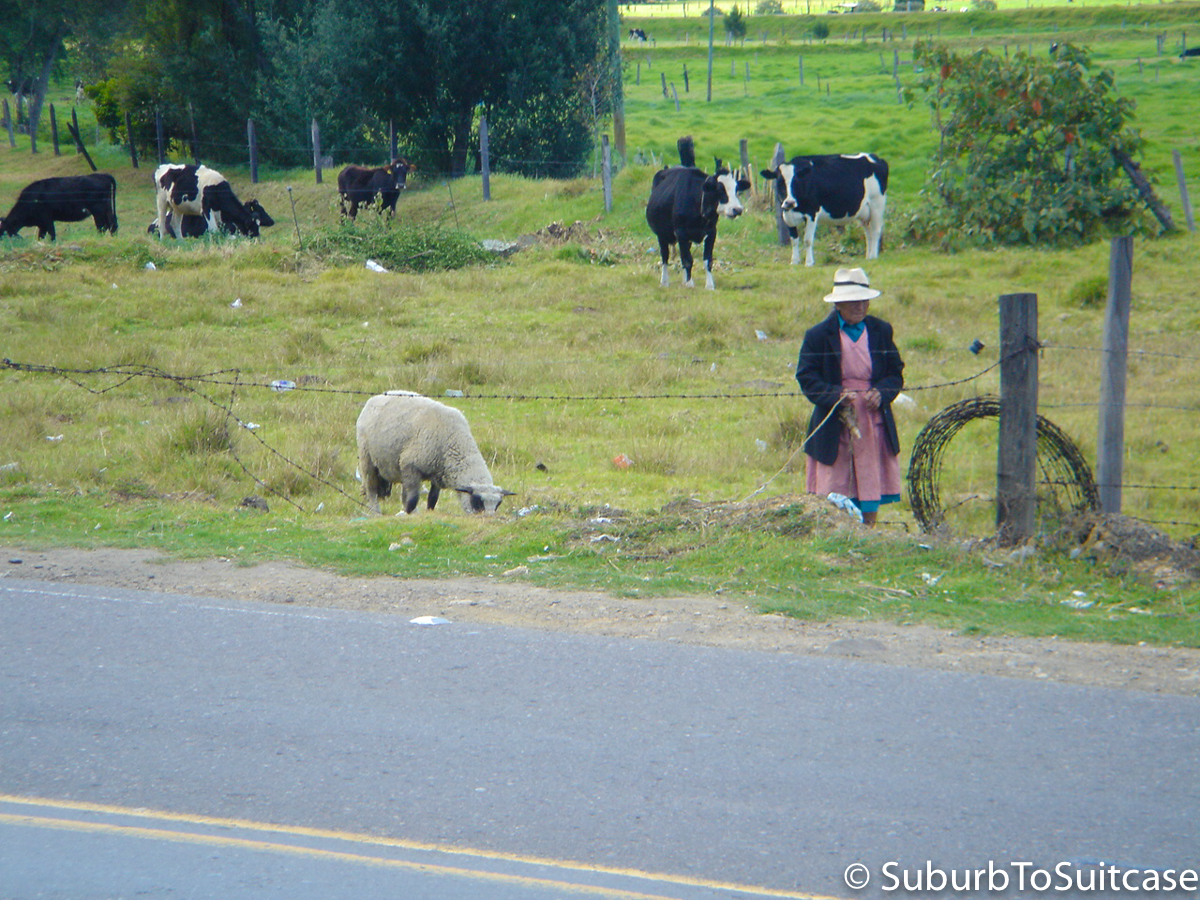
Shepherd tending a small flock in central Colombia
Villa de Leyva – If you are into colonial architecture, this is the place to see. Outdoor markets and other activities are generally underway.
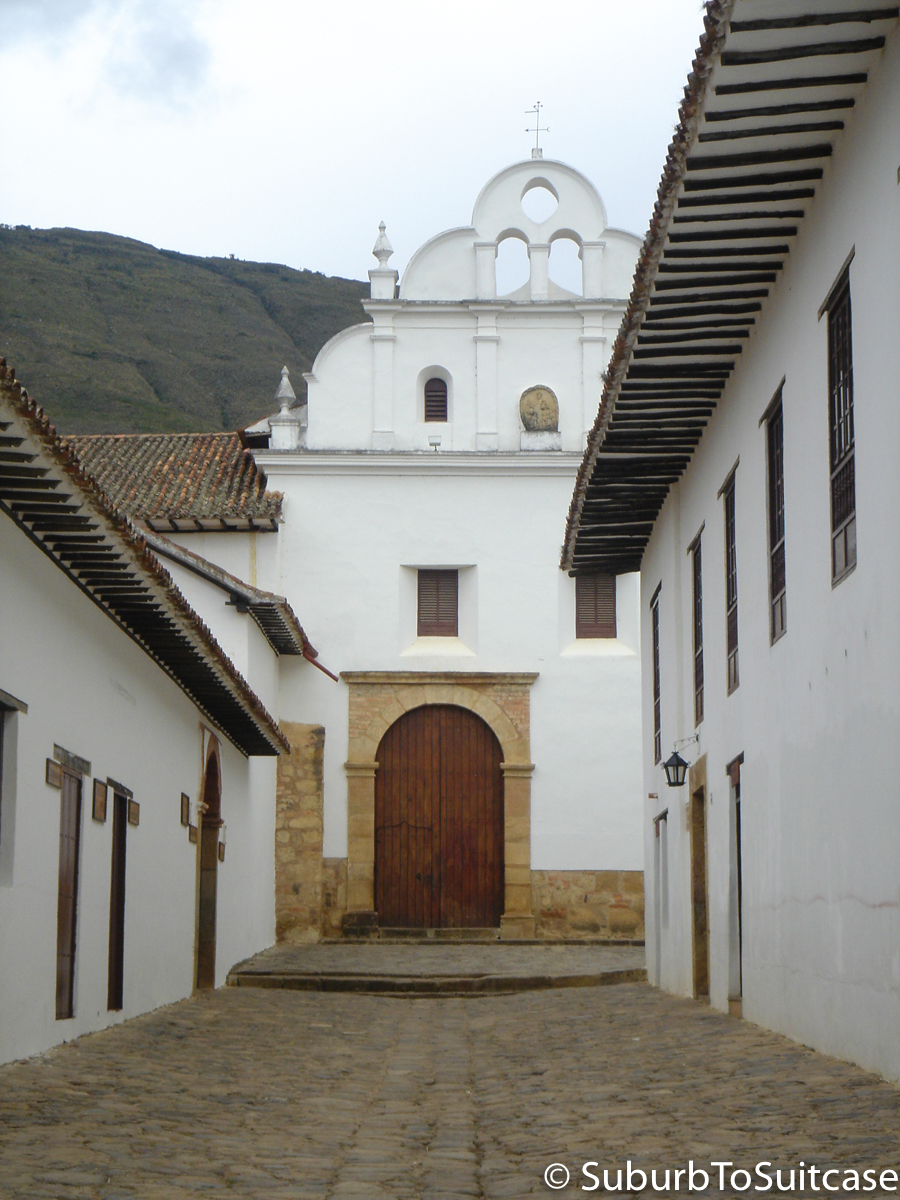
My Favorite Cobblestone Path in Villa de Leyva
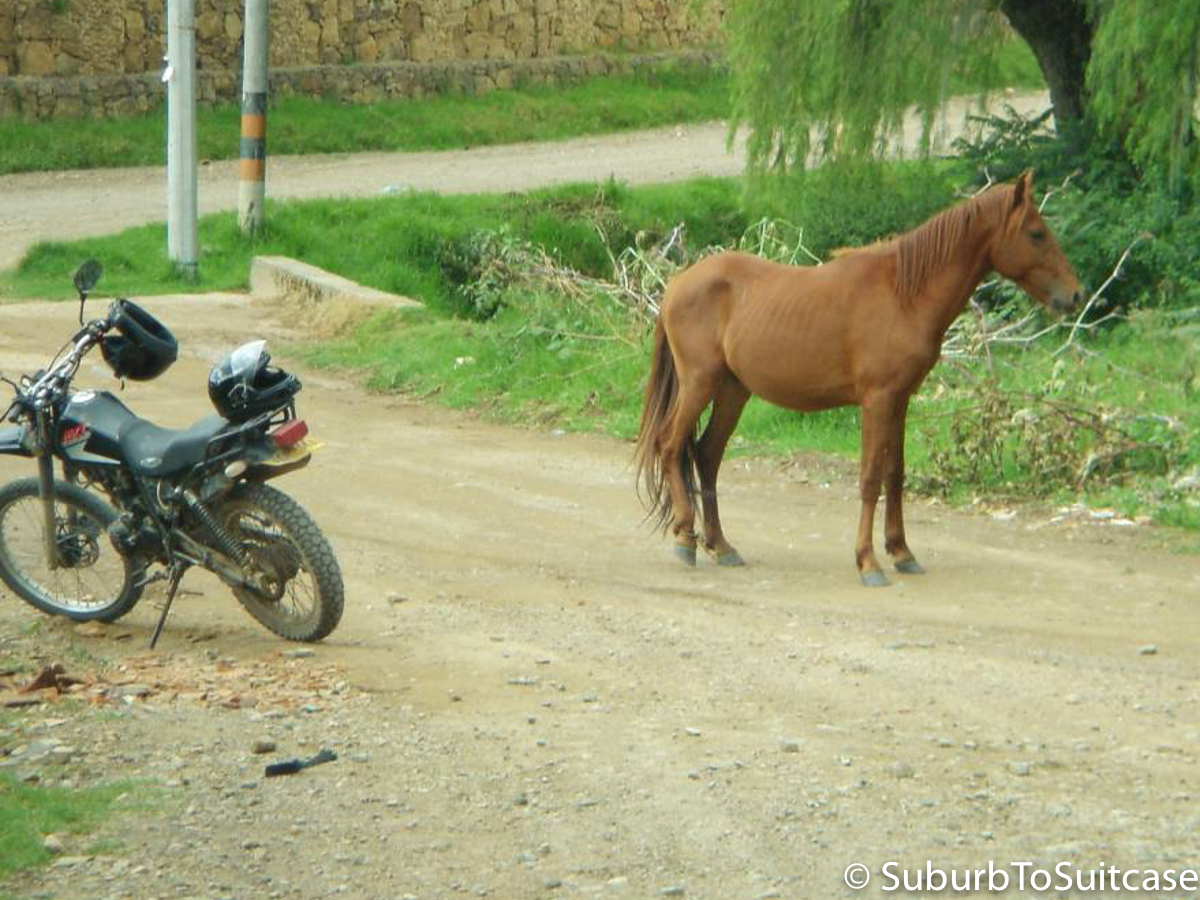
Wild horse in Villa de Leyva
Zipaquirá – This is where you can visit the Catedral de Sal active salt mine with underground church (200 meters below ground). This is really an amazing location to tour. Lick the salt wall inside for good luck (hint: aim for a place that is either very low or very high!).
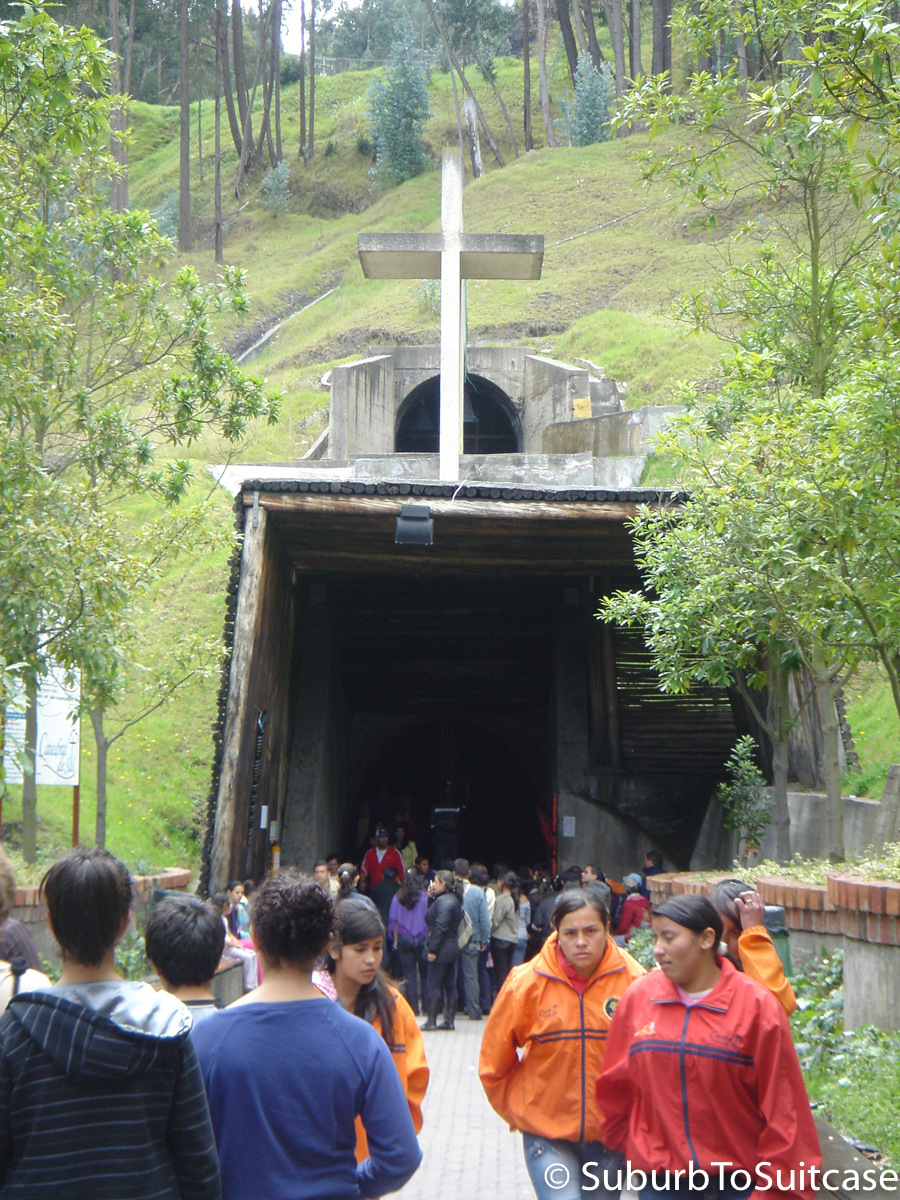
Salt Mine Entrance
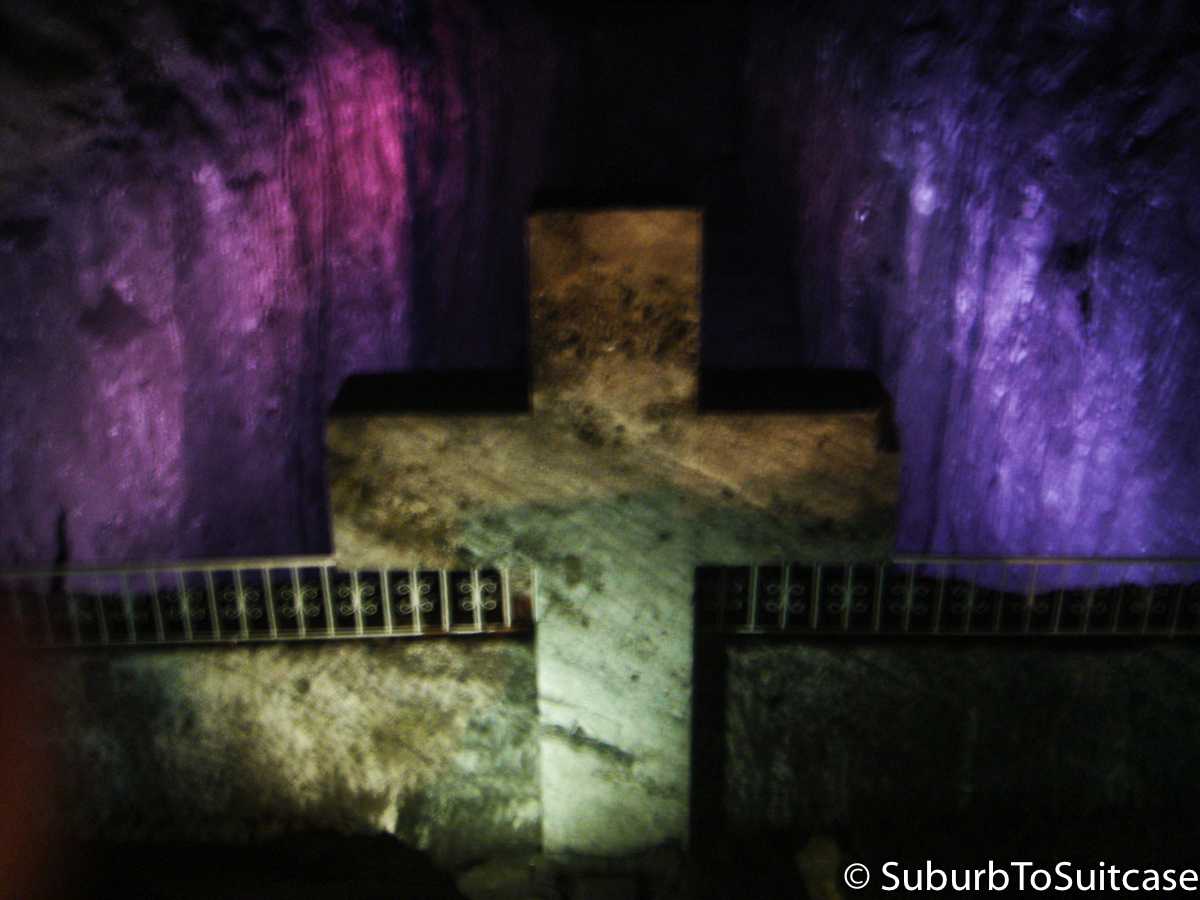
Catedral de Sal inside the active salt mine in Zipaquirá
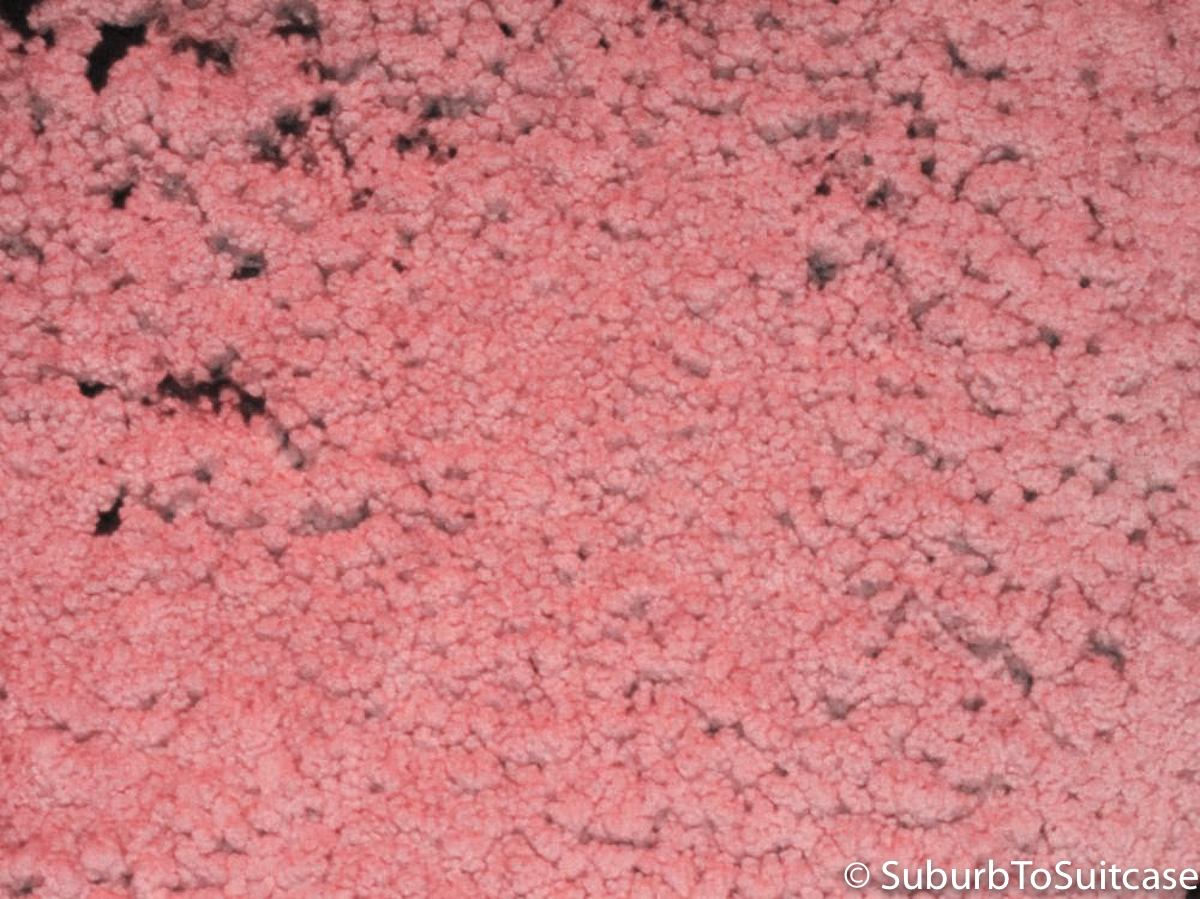
Catedral de Sal Salt Wall in Zipaquirá (white wall illuminated by red lighting)
